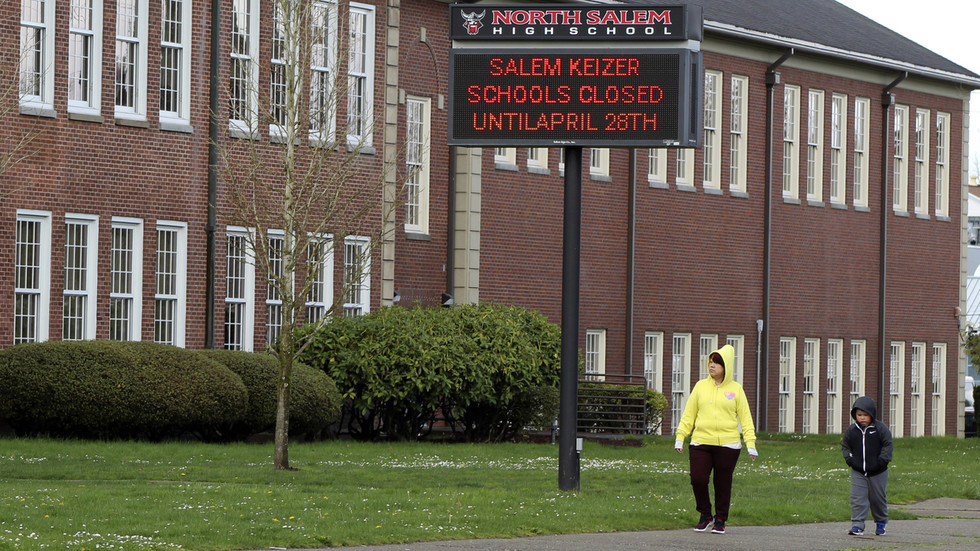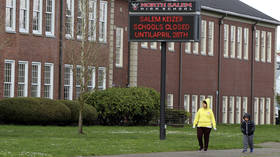
Students shut out of lessons during the pandemic face up to 9% lower lifetime income, with California set to lose $1.3 trillion in GDP

FILE PHOTO: A woman and child walk past North Salem High School in Salem, Oregon, March 31, 2020 © AP / Andrew Selsky
Covid-related school closures caused a drastic drop in test scores, and students affected could see their lifetime income prospects drop by nearly 10%, a recent Stanford University study claimed. According to the research, the shutdowns stand to cost the US $28 trillion over this century.
The study linked declining eighth-grade math and reading scores between 2019 and 2022 with students’ lifetime earning potential, concluding that these scores – which dropped in every single US state since the pandemic hit – will reduce students’ projected income by between 2% and 9% depending on their home state.
This shortfall will cost the states themselves between 0.6% and 2.9% of their gross domestic product (GDP) every year for the rest of this century, the paper continued. Oklahoma (2.9%), Delaware (2.85%), and West Virginia (2.75%) will see the greatest percentage drop in GDP, it claimed, with California suffering the greatest overall loss at $1.3 trillion.

Read more
“The pandemic has had devastating effects in many areas, but none are as potentially severe as those on education,” author Eric Hanushek wrote in the study’s conclusion. “There is overwhelming evidence that students in school during the closure period and during the subsequent adjustments to the pandemic are achieving at significantly lower levels than would have been expected without the pandemic.”
US schools from kindergarten to 12th grade closed for in-person learning in March 2020, with individual states or school boards then deciding when to reopen. Republican-run Florida ordered all school boards to open again that August, for example, while Montana schools only shut their doors for a month. In the Democratic stronghold of California, only around half of all schools had returned to in-person learning by the end of the following school year.
American Federation of Teachers President Randi Weingarten supported school closures, urging teachers to strike if forced to do their jobs in person in the fall of 2020.
The National Assessment of Educational Progress found in October that students’ math and English scores nationwide suffered the greatest year-on-year decline in history in 2022, erasing steady gains since 2000.




